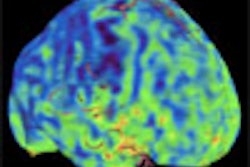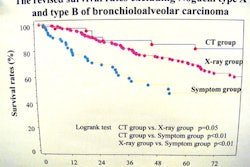Case-controlled studies on the relationship between marijuana use and lung cancer are as rare as Maui Wowie in Manhattan. The results? As fuzzy as a three-day buzz.
For despite the biological plausibility of marijuana being carcinogenic, and suggestions that overall lung cancer risk may be associated with pot smoking, epidemiologic findings have been weaker and far less consistent than studies associating tobacco smoking with lung cancer.
But a new study from Wellington, New Zealand, finds that pot smokers do indeed face higher lung cancer rates that increase for every year of smoking, and for patients who begin smoking younger.
The case-controlled analysis of lung cancer in marijuana smokers 55 years and younger was conducted by Dr. Sarah Aldington, Dr. Richard Beasley, and their colleagues from Medical Research Institute of New Zealand and Wellington Hospital, both in Wellington. The study identified lung cancer cases from hospital databases and the New Zealand Cancer Registry in eight district health boards.
"Our major finding is that if you have marijuana use during a lifetime of more than 10 joint years, which is one joint a day for 10 years, you get about a fivefold increase in risk of lung cancer," Beasley said in a presentation earlier this month at the 2007 American Thoracic Society (ATS) meeting in San Francisco.
The controls were selected randomly from the electoral rolls, with frequency matching to cases in five-year age groups and district health boards, the researchers explained in their poster presentation. The interviewers evaluated possible risk factors including cannabis use, and the researchers used logistic regression analysis to estimate the relative risk (RR) of lung cancer.
In addition to frequency and timing of marijuana use, "we controlled for age, sex, family history, occupation, and pack years of (tobacco) smoking," Beasley said.
In total the researchers documented 79 cases of lung cancer and 324 controls. The risk of lung cancer increased 8% (95% CI: 2% to 15%) for each joint year of exposure (deemed equivalent in risk to about a pack year of tobacco smoking).
The highest tertile of cannabis use was associated with an increased risk of lung cancer (RR = 5.7, 95% CI: 1.5 to 21.6). Still, only 14 lung cancer cases were in the highest tertile, which Beasley acknowledged as a limitation of the study.
Moreover, the risk of lung cancer was associated with the age at which pot smoking began, with each year earlier at onset increasing the risk of cancer by 8%. The population-attributable risk of lung cancer due to marijuana smoking in this age group was estimated at 5%, the researchers reported.
|
Beasley said the New Zealand findings were only a beginning, and that more patients are needed before it can be used to draw firm conclusions. Another limitation: In New Zealand as in much of the world except the U.S., marijuana is generally mixed with tobacco to be smoked in joints.
Still, he said, the lung cancer risk associated with marijuana smoking appears to be real -- contrary to public opinion in New Zealand, where "the word on street is that marijuana is more or less harmless."
Other studies inconclusive
The New Zealand results contradict those of a case-controlled study of Los Angeles-area patients published last year (Cancer Epidemiology, Biomarkers & Prevention, October 2006, Vol. 15:10, pp. 1829-1834).
Hashibe et al included 1,212 incident cancer cases and 1,040 cancer-free controls matched for age, gender, and neighborhood. They found that although using marijuana for 30 or more joint years was positively associated in the crude analyses with each cancer type except pharyngeal cancer, "no positive associations were observed when adjusting for several confounders including cigarette smoking."
The adjusted odds ratio estimate for 60 or more versus 0 joint years was 1.1 (95% CI: 0.56-2.1) for oral cancer, 0.84 (95% CI: 0.28-2.5) for laryngeal cancer, and 0.62 (95% CI: 0.32-1.2) for lung cancer, they reported. The adjusted odds ratio estimate for 30 or more versus 0 joint years was 0.57 (95% CI: 0.20-1.6) for pharyngeal cancer, and 0.53 (95% CI: 0.22-1.3) for esophageal cancer.
"No association was consistently monotonic across exposure categories, and restriction to subjects who never smoked cigarettes yielded similar findings," Hashibe et al reported. "Our results may have been affected by selection bias or error in measuring lifetime exposure and confounder histories; but they suggest that the association of these cancers with marijuana, even long-term or heavy use, is not strong and may be below practically detectable limits."
Beasley, in his ATS presentation, said the Los Angeles study was limited by a 40% response rate. "Also, the reported use of marijuana in the control group was considerably higher than any other study in California," he said.
Uncertainty in Tunisia
A third case-controlled study, which analyzed 149 incident lung cancer cases and 188 controls in Tunisia, was published last year.
Violin et al found a significant association between tobacco use and lung cancer risk, with odds ratios increasing linearly (p for trend < 0.0001) from 3.9 (95% CI: 1.4-10.9) for former smokers to 17.1 (95% CI: 6.3-46.3) among those who had smoked for more than 35 years. But the association between past cannabis use and lung cancer was unclear, with an odds ratio of 4.1 (95% CI: 1.9-9.0) after adjustment for age, tobacco use, and occupational exposures (Journal of Thoracic Oncology, July 2006, Vol. 1:6, pp. 577-579).
The results suggest that smoking cannabis may be a risk factor for lung cancer; however, "no clear dose-response relationship was observed between the risk of lung cancer and the intensity or duration of cannabis use," the authors concluded.
By Eric Barnes
AuntMinnie.com staff writer
June 1, 2007
Related Reading
Brain scans pinpoint cannabis mental health risk, May 1, 2007
DTI scans track schizophrenia-like changes in brains of teen marijuana users, December 1, 2005
MRI reveals patterns of neurological abnormalities in schizophrenia, April 4, 2006
Marijuana may change blood flow to brain, February 8, 2007
Endogenous cannabinoids seen as potential colorectal tumor inhibitors, September 30, 2007
Copyright © 2007 AuntMinnie.com



















